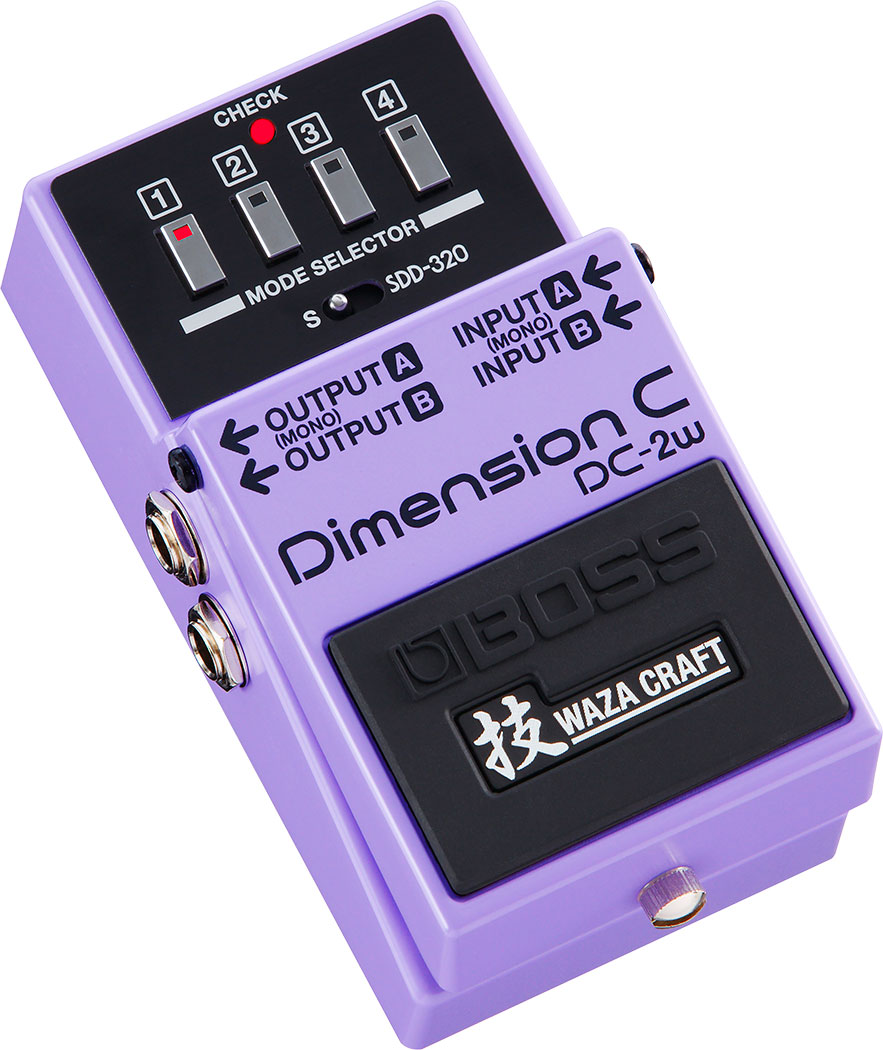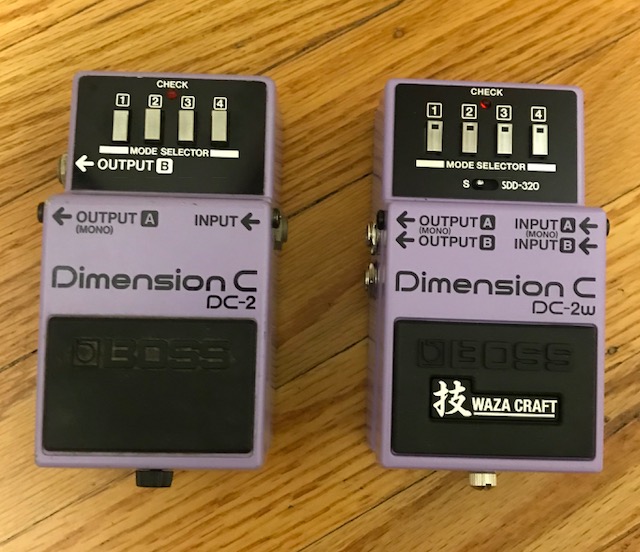 In 1985, at the height of our world becoming ever more digital and complex, Boss bucked the trend and introduced its Dimension C DC-2 compact pedal, an analog spatial effect that was also surprisingly simple to use. With its four push-button modes, I remember at the time I scoffed at the simplicity and limited features being offered by Boss’ newest pedal.
In 1985, at the height of our world becoming ever more digital and complex, Boss bucked the trend and introduced its Dimension C DC-2 compact pedal, an analog spatial effect that was also surprisingly simple to use. With its four push-button modes, I remember at the time I scoffed at the simplicity and limited features being offered by Boss’ newest pedal.
However, when I actually plugged it in and played it, it was a different experience. Unlike a typical chorus effect that could sometimes be overwhelming in its pitch and motion depth, the Dimension C reacted much differently. With its four push button modes that ranged from subtle to increasingly more intense, the Dimension C never produced that warbling and overdone (and rather predictive) chorus sound that one would expect to hear. The Dimension C had thickening and a doubling effect like a chorus, but it was…different.
The secret to the Dimension C’s unusual effect is that it in fact deploys two separate analog chorus effects which then overlap each other in and out of phase. It’s this complexity that provides a sense of richness and sonic width while eliminating the common chorus warbling or movement effects. It’s been said that the Dimension C is in fact the chorus for people who hate chorus.
This effect was only in production for four years and now, Boss has brought back the Dimension C with its latest Waza Craft creation, the DC-2w. Made in Japan like the original and colored in light purple paint, the DC-2w not only includes the feature set of the original with its four button controls and stereo output, but now also includes stereo inputs, and like other Waza Craft effects, a custom switch to go into an additional new mode. This time, it’s the SDD-320 mode which is based off the rack mount SDD-320 Dimension D which is a famed studio effect introduced in the late 1970s.
 The Waza Craft lineup has been very successful for the Boss brand, with its highly-acclaimed lineup that continues to sell to old and new Boss fans alike. And as we’ve done with previous Waza Craft pedals, we wanted to compare the latest model with an original to share the differences.
The Waza Craft lineup has been very successful for the Boss brand, with its highly-acclaimed lineup that continues to sell to old and new Boss fans alike. And as we’ve done with previous Waza Craft pedals, we wanted to compare the latest model with an original to share the differences.
The new DC-2w obviously wins in features but also in usability control. Beyond the added features mentioned above, the DC-2w features LED lit buttons to show which mode is depressed, while the originals do not. This is useful for onstage or at a glance viewing to know which mode is on. And to add to that, you can now run two modes simultaneously to blend the sounds for further sound shaping. Mode 1 and 2 are subtle spatial enhancers, while Mode 3 and 4 dive into a deeper chorus effect. Combining the modes makes for some fun and interesting combinations.
Switching into SDD-320 mode, the spatial effects grow a little more rich in depth overall. When adding some overdrive into the mix, one could almost sense a slight bit of a univibe type effect with the phase cancellations, but without the rotary swirling.
Using the first two mode settings, you can easily envision the DC-2w serving as an “always on” type effect as it’s a beautiful enhancement without becoming overbearing. An even more incredible and effective use of the Dimension effect is while running it in stereo. In fact, this is where the effect becomes jaw dropping. This is where it’s best meant to be, with its real-world phase cancellations in an open area running two signals into two amplifiers.
Comparing the original DC-2 vs the new DC-2w and A/B’ing them, you can hear that the depth and rate of each of the chorus mode effects are similar, but tonally, they do sound a little different from each other. The original is darker and has a little less headroom which means it will clip when pushed, while the new DC-2w is cleaner and has a brighter overall sheen to each mode. It doesn’t make one better or worse than the other, it’s just that they are characteristically a little different from each other.

The Boss DC-2w has a street price of $229.99, carries a 5-year warranty and no doubt will be a spatial delight to any guitarist’s rig.